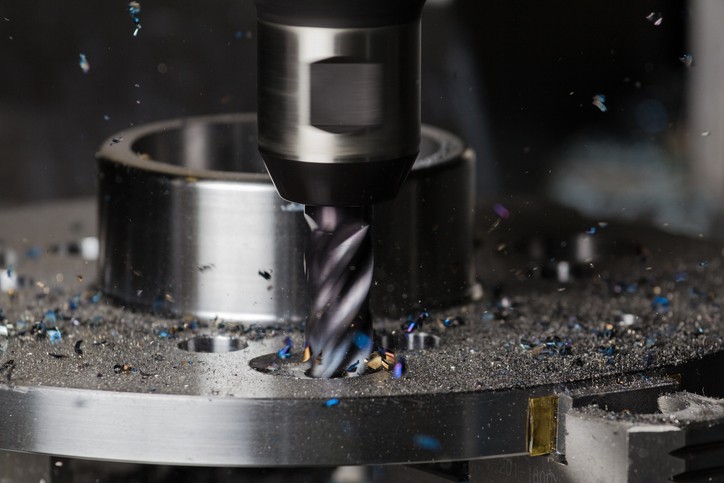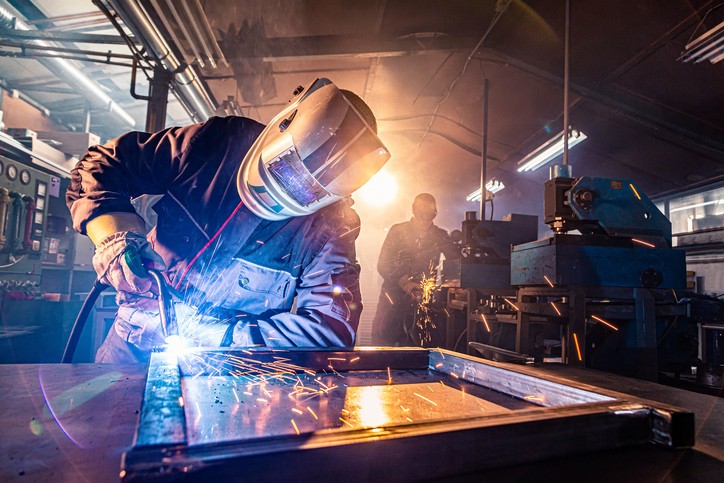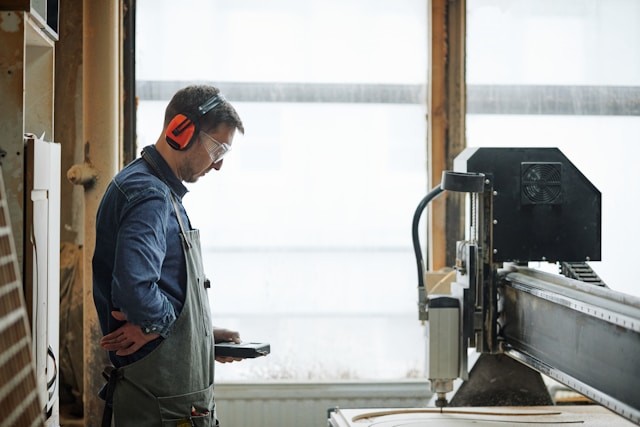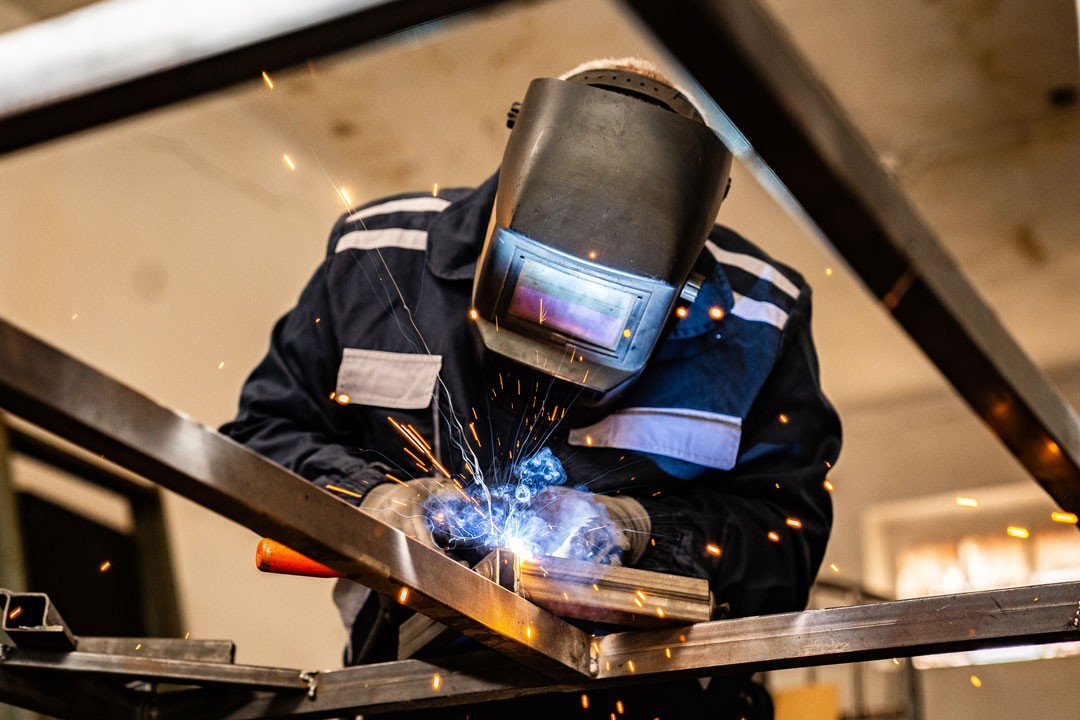
Table of Contents
Custom CNC parts are crucial in modern manufacturing, providing unmatched precision and efficiency. As industries advance, the demand for specialized components grows, making custom CNC parts an essential element in achieving high-quality production. This article explores the importance of custom CNC parts, their role in various sectors, and the benefits they bring to manufacturing processes.
Understanding Custom CNC Parts
Custom CNC parts are components made using Computer Numerical Control (CNC) machining tailored to specific requirements. These parts are essential in industries where standard components do not meet the precise needs of the application. Customization ensures that every part fits perfectly and functions optimally within its intended use.
Overview of the CNC Machining Process
CNC machining is a manufacturing process in which pre-programmed computer software dictates the movement of factory tools and machinery. This process can control a range of complex machinery, from grinders and lathes to mills and routers.
With CNC machining, three-dimensional cutting tasks are accomplished with a single set of prompts, ensuring precision and efficiency. The process involves the following steps:
- Design Creation: Engineers use CAD software to create a detailed design of the part.
- Programming: The CAD is translated into CNC machine language (G-code).
- Machining: The CNC machine executes the programmed instructions to produce the part.
- Quality Control: Finished parts undergo rigorous testing to ensure they meet the required specifications.
Benefits of Custom CNC Parts in Various Industries
Custom CNC parts offer numerous advantages across different sectors, including:
- Automotive Industry: Provides precise components that enhance vehicle performance and safety.
- Aerospace Industry: Produces high-tolerance parts crucial for aircraft reliability and efficiency.
- Medical Sector: Enables the creation of specialized medical devices and implants tailored to individual patients.
- Electronics: Facilitates the production of intricate components necessary for modern electronic devices.
By leveraging custom CNC parts, manufacturers achieve superior product quality, reduced waste, and enhanced production speed, ultimately leading to increased competitiveness in the market.
The Role of Metal Fabrication in CNC Machining
Metal fabrication is the process of creating metal structures and components through cutting, bending, and assembling. It involves transforming raw metal materials into predefined shapes and sizes. This process is fundamental to producing parts that are essential for various applications, ranging from industrial machinery to consumer products.
How Metal Fabrication Integrates with CNC Machining
Metal fabrication and CNC machining are often integrated to enhance the manufacturing of custom CNC parts. In this integration, metal fabrication sets the stage by preparing the raw material, which is then precisely shaped and refined through CNC machining. CNC machines take the fabricated metal and perform intricate cutting, drilling, milling, and turning operations based on computer-aided design (CAD) instructions. This synergy allows for the creation of highly detailed and precise custom CNC parts.
Benefits of Combining These Processes for Precision and Efficiency
Combining metal fabrication with CNC machining offers several benefits, including:
- Enhanced Precision: CNC machines can achieve extremely tight tolerances, ensuring that every part meets exact specifications.
- Improved Efficiency: The automation and precision of CNC machining reduce production time and material waste.
- Versatility: The combination allows for the creation of complex geometries and designs that would be difficult to achieve with manual processes.
- Consistency: Automated processes ensure that each part produced is consistent in quality and dimensions, which is crucial for mass production.
This integration results in custom CNC parts that not only meet high standards of precision but are also produced efficiently, catering to the needs of various industries.
Key Processes in CNC Machining
Custom CNC parts require a series of precise machining processes to achieve the desired specifications. Key processes like cutting, milling, turning, and finishing play crucial roles in shaping and refining these parts. Each process contributes uniquely to the overall precision and efficiency, ensuring that the final custom CNC parts meet the highest standards of quality and performance.
Cutting
Cutting is a fundamental process in CNC machining, involving various techniques to shape the material. Two common cutting methods are:
- Laser Cutting: Uses a focused laser beam to cut materials with high precision and speed. It is ideal for intricate designs and offers clean edges, making it suitable for custom CNC parts.
- Plasma Cutting: This involves using an electrically conductive gas to transfer energy from a power supply to the material, cutting through it. This method is effective for thicker materials and provides fast cutting speeds.
Milling and Turning
Milling and turning are two primary CNC machining processes:
- Milling: This process involves rotating cutting tools to remove material from a stationary workpiece. It is used for creating complex shapes, slots, and holes. Milling is versatile and can produce a wide range of geometries.
- Turning: In turning, the workpiece rotates while a stationary cutting tool shapes it. This process is ideal for producing cylindrical parts, such as shafts and bolts. Turning is highly efficient for creating symmetrical components.
Finishing Techniques
Finishing techniques are crucial in CNC machining to achieve the desired surface quality and precision. These techniques include:
- Polishing: Enhances the surface smoothness and aesthetic appeal of the part.
- Anodizing: Adds a protective layer to aluminum parts, improving corrosion resistance and durability.
- Electroplating: Coats the part with a thin layer of metal to enhance its properties, such as hardness and resistance to wear.
Finishing ensures that custom CNC parts meet dimensional accuracy and possess the necessary surface characteristics for their intended application. This final step is vital in delivering high-quality, reliable components to various industries.
Dip Brazing: Enhancing CNC Parts
Dip brazing is a metal-joining process where components are bonded together using a filler metal with a lower melting point than the base materials.
The parts are submerged in a molten salt bath, which uniformly heats the assembly, allowing the filler metal to flow into the joints by capillary action. This method is ideal for creating strong, hermetic seals in intricate assemblies, making it particularly suitable for complex, custom CNC parts.
Advantages of Dip Brazing in the Context of CNC Parts
Dip brazing offers several advantages for custom CNC parts, including:
- Uniform Heating: The molten salt bath ensures even heating of the entire assembly, reducing the risk of thermal distortion and ensuring consistent quality.
- Strength and Integrity: The process creates strong, reliable joints that can withstand high stress and harsh operating conditions.
- Complex Geometries: Dip brazing is ideal for joining parts with complex geometries that are difficult to weld using traditional methods.
- Clean Finish: The process results in smooth, clean joints without the need for extensive post-processing, maintaining the precision of the custom CNC parts.
How Dip Brazing Improves the Quality and Durability of Custom CNC Parts
Dip brazing enhances the quality and durability of custom CNC parts by providing robust, uniform joints that resist mechanical and thermal stresses. The process ensures high precision in the assembly, preserving the intricate details and tolerances critical to custom CNC parts. Furthermore, the joints created through dip brazing are resistant to corrosion and fatigue, extending the lifespan of the components and ensuring their reliability in demanding applications.
Balancing Precision and Efficiency
Precision is paramount in custom CNC parts, as it directly impacts the functionality and performance of the final product. High precision ensures that parts fit together seamlessly, operate smoothly, and meet stringent industry standards. Precision machining is essential in applications where even minor deviations can lead to significant issues, such as in aerospace, medical devices, and automotive components.
Strategies for Maintaining Efficiency Without Compromising Quality
Balancing precision and efficiency in the production of custom CNC parts requires strategic planning and the implementation of advanced technologies. Here are some key strategies:
- Automated CNC Machines: Utilizing advanced CNC machines with automation capabilities can enhance both precision and efficiency. Automation reduces human error and increases production speed.
- Computer-Aided Design (CAD): Employing sophisticated CAD software ensures accurate design and simulation, reducing the need for extensive manual adjustments and rework.
- Quality Control Systems: Implementing rigorous quality control measures, such as in-process inspections and real-time monitoring, helps maintain high standards without slowing down production.
- Optimized Tooling: Using high-quality, precisely calibrated tools and regularly maintaining them ensures consistent performance and reduces downtime.
- Lean Manufacturing: Adopting lean manufacturing principles helps streamline processes, minimize waste, and improve overall efficiency while maintaining the precision required for custom CNC parts.
By integrating these strategies, manufacturers can achieve the perfect balance between precision and efficiency, ensuring that custom CNC parts are produced to the highest standards while meeting production timelines and cost constraints.
Future Trends in Custom CNC Parts and Metal Fabrication
The future of custom CNC parts and metal fabrication is set to be revolutionized by several emerging technologies:
- Additive Manufacturing (3D Printing): Integrating additive manufacturing with CNC machining offers the potential for creating highly complex geometries and reducing material waste. Hybrid machines that combine both technologies are becoming more prevalent, providing greater flexibility in production.
- Artificial Intelligence (AI) and Machine Learning: AI and machine learning are being used to optimize CNC machining processes. These technologies can predict tool wear, improve design accuracy, and automate quality control, leading to higher precision and efficiency.
- Internet of Things (IoT): IoT enables real-time monitoring and data collection from CNC machines. This connectivity allows for predictive maintenance, reducing downtime, and improving overall operational efficiency.
- Advanced Materials: The development of new materials, such as composites and high-performance alloys, expands the capabilities of custom CNC parts. These materials offer better strength-to-weight ratios and improved durability, enhancing the performance of finished products.
Sustainability and Eco-Friendly Practices in CNC Machining
Sustainability is becoming increasingly important in CNC machining and metal fabrication. Several practices are being adopted to reduce the environmental impact:
- Energy-Efficient Machines: Modern CNC machines are designed to be more energy-efficient, reducing power consumption and lowering carbon footprints.
- Recycling and Waste Management: Effective recycling programs for metal scraps and the use of biodegradable cutting fluids minimize waste and environmental harm.
- Green Manufacturing Processes: Implementing processes that reduce emissions and utilize sustainable materials helps create eco-friendly manufacturing environments.
- Lifecycle Analysis: Conducting lifecycle analyses of custom CNC parts helps in understanding and mitigating their environmental impact from production to disposal.
Predictions for the Future of CNC Machining and Metal Fabrication
Looking ahead, the CNC machining and metal fabrication industries are poised for significant advancements:
- Increased Automation: The adoption of fully automated CNC systems will continue to rise, leading to higher productivity and consistent quality.
- Smart Factories: Integration of smart technologies will create highly efficient manufacturing environments where machines communicate and optimize processes autonomously.
- Personalized Manufacturing: Advances in customization will enable the production of highly specialized parts tailored to individual requirements, making custom CNC parts even more precise and efficient.
- Sustainability Focus: The industry will place a greater emphasis on sustainable practices, with increased use of renewable energy sources and eco-friendly materials.
Conclusion
Balancing precision and efficiency in the production of custom CNC parts is crucial for meeting the high standards demanded by modern industries. As technology continues to evolve, manufacturers must adopt innovative solutions to maintain this balance while also focusing on sustainability.
The future of CNC machining and metal fabrication is bright, with emerging technologies and eco-friendly practices paving the way for even greater advancements. By embracing these trends, the industry will continue to produce high-quality, custom CNC parts that drive progress across various sectors.
Ready to enhance your manufacturing process with precision-engineered custom CNC parts? Contact NAMF today to learn how we can meet your specific needs and help you stay ahead in the industry.



